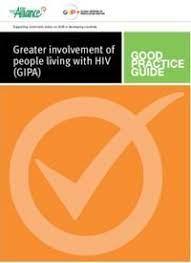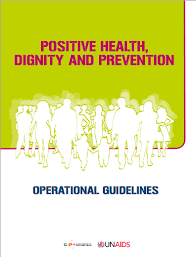KP library
- Home
- KP library
LINKAGES Violence Prevention and Response Package

Members of key populations experience disproportionate burdens of both HIV and violence. These epidemics are linked—violence increases HIV vulnerability and poses a barrier to HIV testing, disclosure and adherence to antiretroviral therapy. Addressing both public health challenges simultaneously is an important strategy for epidemic control and the protection of human rights.
The LINKAGES project developed a programmatic guide and three training manuals that support the integration of violence prevention and response activities and HIV prevention, care and treatment services in key population programs. The guide contains principles, step-by-step instruction, and sample templates and tools. The three training manuals build the knowledge and skills of health care workers, peer educators and outreach workers, and law enforcement officers to understand, assess, prevent and appropriately respond to violence in key population members’ lives. Each training is highly interactive and includes ideas for adaptation.
This Guidance Package, developed by people living with HIV, describes the important issues and key areas for change. Going forward, legislators, government ministries, international organizations, donors, and community- and faith-based organizations, with the continued input and guidance of people living with HIV, must work together to put in place the services and legal supports that will build better sexual and reproductive health for everyone.
Consolidated Guidelines on HIV Prevention, Diagnosis, Treatment and Care for Key Populations
In these 2014 consolidated guidelines on HIV prevention, diagnosis, treatment and care for key populations, the World Health Organization (WHO) brings together all existing guidance relevant to five key populations – men who have sex with men, people who inject drugs, people in prisons and other closed settings, sex workers, and transgender people – and updates selected guidance and recommendations. These guidelines aim to: provide a comprehensive package of evidence-based HIV-related recommendations for all key populations; increase awareness of the needs of and issues important to key populations; improve access, coverage and uptake of effective and acceptable services; and catalyze greater national and global commitment to adequate funding and services.
This guide was produced by the International HIV/AIDS Alliance and the Global Network of People Living with HIV (GNP +) . It is part of a series of good practice guides produced by the Alliance. This series combines the experience of global HIV programming at the community level in order to define and guide good practice in a variety of technical areas. The Good Practice Guide on GIPA (Greater Involvement of People Living with HIV and AIDS) contains information , strategies, and resources to support program managers to enable meaningful participation of PLHIV in new and existing programs of HIV.
This field-tested Good Practice Guide features Internaitonal AIDS Alliance programming principles and standards relevant to all HIV programming and specific technical area of HIV and human rights. It contains information, strategies, and resources to help programmers meet those standards, and can be used at any time in the program cycle to assess good practice and to help develop proposals and monitoring and evaluation frameworks.
Developed by the Global Network of People Living with HIV (GNP+) and the Joint United Nations Programme on HIV/AIDS (UNAIDS), Positive Health, Dignity and Prevention represents a fundamental shift in the way in which people living with HIV are involved in the HIV response:
- It calls for leadership by people living with HIV, including those from key populations
- It transforms the concept of access to services, from a simple biomedical model to a holistic approach to meeting the needs of people living with HIV and their families in their communities
- It puts the person living with HIV in the centre, and calls for a comprehensive set of actions – at policy and service delivery levels – that take into consideration the individual’s lived environment; and
- It recognises the importance of meeting not only the person’s clinical needs but also their health needs and to protect their human rights.
The Opeational Guidelines were developed for and by people living with HIV based on numerous consultations at the global, regional, and national levels. It articulates the next stage in the HIV response, where people living with HIV are at the centre and services offered in an environment that is supportive to meet all the needs of people living with HIV and their families. Instead of being regarded by "positive prevention" programmes as mere recipients of care and vessels of a virus that needs to be contained, people living with HIV embrace a new paradigm where they are actively involved as part of the solution to the epidemic and not seen as part of the problem.
Advancing HIV Justice: A progress report of achievements and challenges in global advocacy against HIV criminalization
Many laws criminalising HIV non-disclosure, exposure and transmission were put in place due to ignorance about how HIV is transmitted and what sort of harm it causes. Fear of HIV and discrimination against people living with HIV are almost palpable in many of these laws and in the sentences that result from prosecution. This document scans the current situation, the good developments and the bad; details the many initiatives by independent experts, governments, the United Nations and civil society; describes the latest research and its findings in terms of prosecutions and convictions and the social impact of these on the HIV response and people’s behaviour. Most importantly, it powerfully demonstrates that civil society advocacy on this issue is not only alive – it goes from strength to strength.








